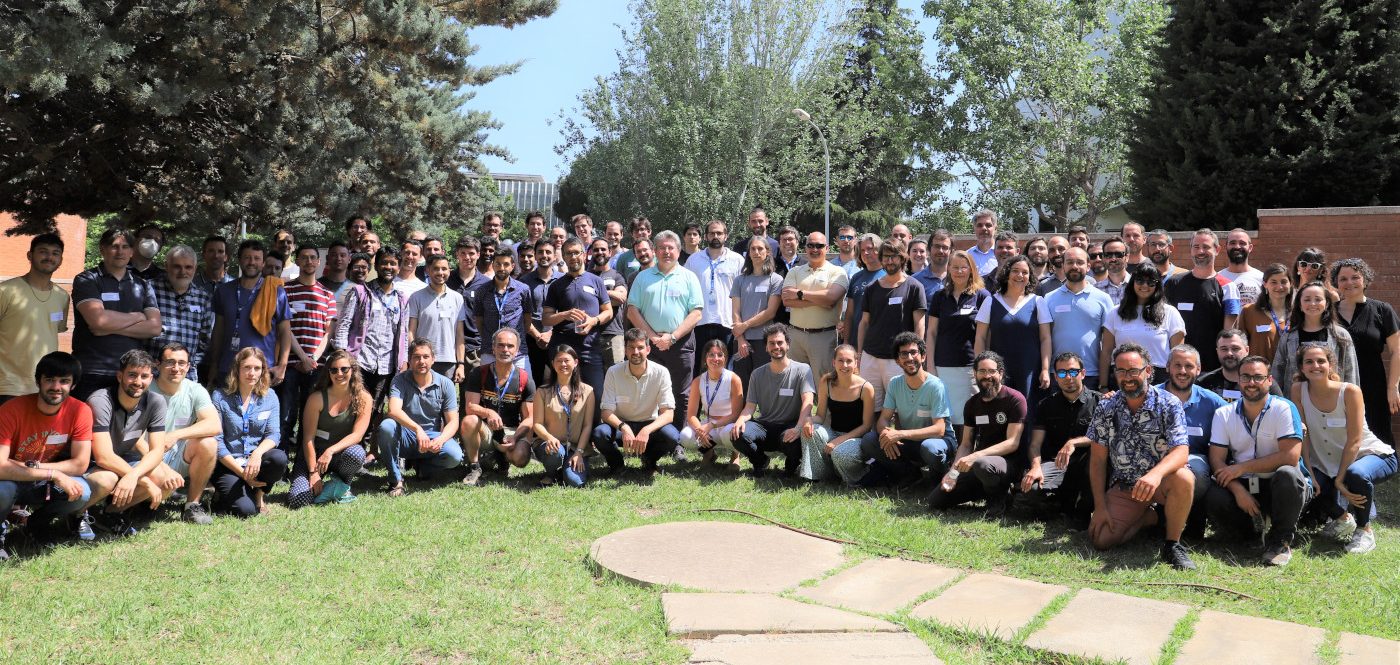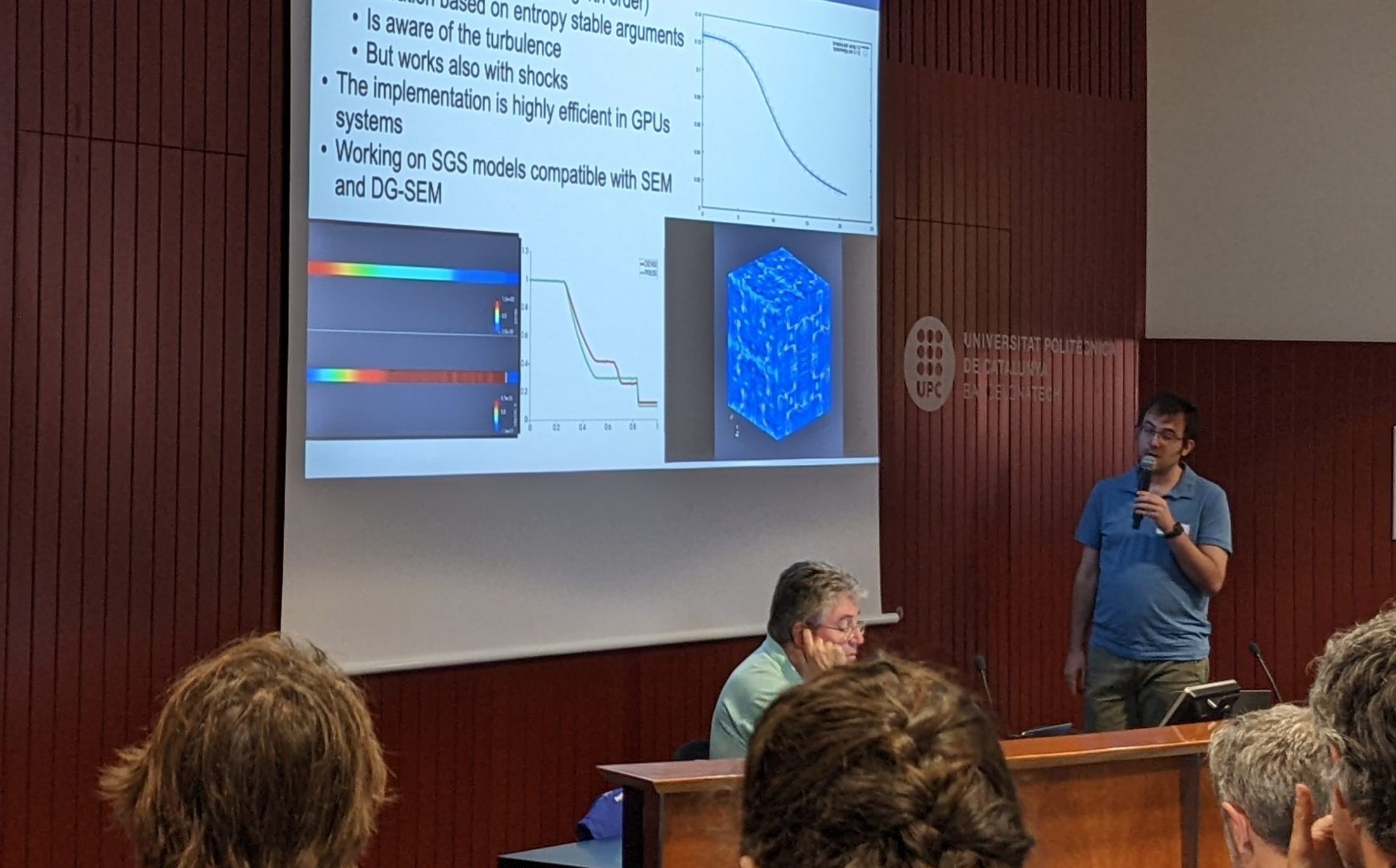
On Wednesday 18th of May the Computer Applications in Science & Engineering (CASE) department of BSC, to which our Fusion group belongs, resumed its annual Retreat paused since 2019. The full day event was held in the Vertex Building in the same UPC university campus where the BSC’s headquarters is located and was designed for newcomers to know all the department, and for everyone to catch up and bond after 2 years of predominantly working from home. Furthermore, it was an opportunity to have a first hand overview of the current state and future plans of the whole department’s projects and research, from the groups leaders and the head of the department Prof. Dr. José María Cela’s.

José María Cela conducted the welcome part leading to the first group talk delving into Data Analytics and Visualisation, which showed documentaries, interactive interfaces and art works that CASE has produced for both industrial and social projects in the fields of AI-based optimisation, machine learning and city planning. The second talk was about Propulsion Technologies focused on alternative fuels and improvement of combustion engines in order to satisfy the growing demand from society and the aviation industry about reducing the emissions and the pollution in populated areas. Next, the new group of Dual Technologies group was presented.
The first block concluded with an overview of the Large Scale Computational Fluid Dynamics group works on the fields of aeronautics, automotive, energy and pollution simulations. This group efforts where put into the developing of a compressive fluid scheme that preserves energy and can by used with Large Eddy Simulations (LES) to capture shocks, the improvement of wall modelled LES schemes and the development of accurate multi-scale algorithms for prediction pollution with a coarse grid based on real pollution data and fine grid cells based on city configuration images and machine learning.

The second session started with the HPC software engineering and Physical and Numerical Modelling groups that are responsible for the development of Alya‘s kernel, the main FE piece of software that most of Engineering CASE research use. Their talk showed the improvements on Alya’s infrastructure and performance suits; the Biomechanics advances in heart, respiratory systems and uterus simulations; and one of our fusion group simulation cases on ITER as example for performance optimisation.
Next, Mervi Mantsinen, leader of our Fusion group, presented our advances and plans in the areas of Plasma Physics (including plasma heating, fast ions and synthetic diagnostics); HPC for Fusion (scalable algorithms, code parallelization and performance optimization, code refactoring, GPU-enabling); Fusion Materials Modelling (density functional theory, molecular dynamics) and Fusion Engineering (multi-physics modelling, neutron transport, magnets) as well as our Dissemination Activities, among them, this blog.

Following our intervention, the Smart Cities group members showed their research related with AI treatment of semantic and open data for smart cities and analysis of textual information with the project marIA as an example, and how they can link this information to improve other AI predictions with an example of the Saint George on a Bike project that excludes non adequate results based on the invention date of technologies avoiding the bias of training recognition software based mostly on 20th century real pictures. The next talk was centered around the real expectations of the promising quantum computing field in opposition to the artificial hype created by non-specialised newsfeeds, the ongoing work of the Quantic group on determining where their benefits are maximised, how to simulate this technology with regular HPC and the plans to build a real quantum computer in BSC facilities.
The Geosphysical Applications group showed their improvements in earth hazard prediction, elecromagnetism and medical imaging. The last group talk was given by the Geometry and Meshing group emphasising the importance of preserving engineering decisions while meshing, their algorithms improving the most extended meshing ones, and how they managed to employ optimised order 4 curved elements to enhance the theoretical 32 times reduction by a factor of more than 10.
After the group talks, a long lunch break took place in order to provide a space to interact with all the colleagues in an informal way. Finally, Prof. Cela gave a talk on the status of the BSC and the CASE department currently formed by 110 researchers, the areas for improvement, the strategic objectives for the close future among which fusion was included and the plans for Marenostrum 5 supercomputer.
